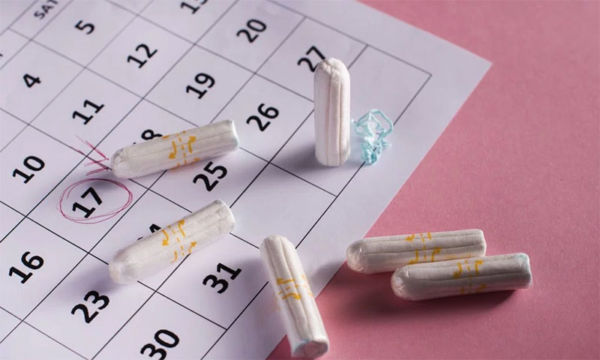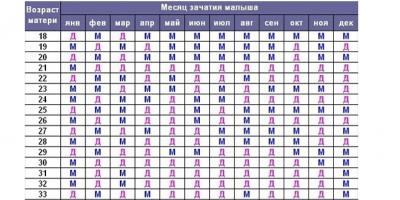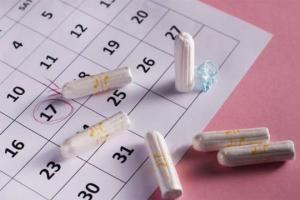With puberty, a monthly rhythmic process comes into a girl's life, which is clearly repeated all her life until the onset of menopause. The norm of the menstrual cycle, i.e. its duration in days and the number of cycles per year is the main indicator of a woman's health.
How many days is the menstrual cycle
The average menstrual cycle is considered to be 28 days. The normal range is 21 to 35 days. Everything that goes beyond these limits is already a deviation caused by some factors, external or internal. It is considered physiological when problems occur in adolescent girls during the formation of their female function or in women during its attenuation.
The duration of the menstrual cycle and the rate of its course may be disturbed under the influence of:
- stress, overload at work, overwork;
- climate change, change of residence;
- physical loads.

Deviations in the mechanism of the female reproductive system also do not pass without a trace, the duration of the menstrual cycle with normal rhythm goes astray:
- in violation of hormonal balance;
- gynecological diseases;
- during inflammatory phenomena in the female sphere;
- when infected with sexually transmitted infections.
menstruation cycle
Normally, the menstrual cycle consists of two periods separated by ovulation.
First phase
In its first half, which begins on the first day of menstruation, under the influence of FSH (follicle-stimulating hormone) and estrogen, follicles begin to grow. Gradually, one of them bursts forward, a full-fledged egg develops in it, and the rest begin to disappear.
The level of the hormone of the first phase grows in parallel with the growth of the liquid bubble, reaching its maximum value by the middle of the cycle, which forces the release of luteinizing hormone, which is the herald of the onset of ovulation.
As soon as a LH surge is recorded using a basal temperature measurement or an ovulation test, there is 24-36 hours left before the female cell exits. This is the most favorable time for conception.
Phases of the menstrual cycle
The duration of the second phase
After the rupture of the follicle, the second phase of the menstrual cycle begins, its norm of 14 days is a fixed value, the same for any woman. In the second phase, a corpus luteum begins to grow in the place of the ruptured bubble, producing progesterone. The latter controls fertilization, prepares the endometrium for the moment of implantation of the embryo and helps its further growth and development.
In the absence of fertilization in the second phase, the egg dies within a day.
At the end of the second phase, the mucous layer of the uterus is shed, menstruation and a new menstrual cycle begin.
Failures in cycle time
We examined what is the norm for the menstrual cycle, which proceeds without deviations. But a number of women are faced with the problem of failure of the regularity and duration of the menstrual cycle.
What are dangerous deviations from the norm
In such cases, shifts can occur at any stage, resulting in such atypical phenomena:
- the follicle cannot develop;
- the mature cell is unable to leave the ovary;
- there is insufficiency of the corpus luteum, which prevents the conception and attachment of the fetal egg.
The duration of the menstrual cycle and its failures
Menses in such circumstances come when they please. And therefore, it is difficult to say how many days the menstrual cycle lasts normally with such a deviation. This can be 17-20 days or last up to 40 days.
If the interval between critical days is from 40 to 60 days, this is already a serious bell, requiring a visit to a gynecologist for a comprehensive examination and search for the cause of the failure.
In such situations, determining the beginning of the menstrual cycle, how many days it should normally last, is a very difficult task. It is especially difficult to cope with it for girls who want to track the moment of ovulation in order to conceive a child. Simple calculations, as with the usual cycle duration, will not help here.
How to avoid them
If doctors have established that the problem is not in pathology, but in the hormonal background without deviations, then you need to reconsider your lifestyle:
- to refuse from bad habits;
- avoid stressful moments;
- organize healthy sleep and rest;
- adjust nutrition.
Detection of ovulation in the menstrual cycle
It is better to try to calculate a favorable day for conception using ovulation tests. To find the starting day of the study, it is necessary to select the shortest from the last 3-6 cycles and subtract 17 from its value. As a result, we get a number indicating the first day of the start of testing.

It must be carried out daily until a positive result is found. Sometimes the procedure is repeated up to 5 days and not always sexual intercourse during the alleged ovulation ends with fertilization.
In general, at the birth of a girl, thousands of rudimentary follicles are already laid in her ovaries, which begin to actively develop with the onset of maturity. Specialist studies prove that not all monthly rhythmic periods end with the maturation of the female cell and its exit from the ovary.
In a lifetime, only about 400 cycles end in ovulation, and only a few eggs are fertilized. Therefore, it is difficult to say specifically how many menstrual cycles per year normally end in ovulation. It all depends on the individuality of each female organism and on many factors, both external and internal.
But, since determining the day of cell release can play a significant role in planning pregnancy, there are a sufficient number of methods and tools in medicine to help solve this problem.
In addition to measuring basal temperature with the compilation of its schedule and ovulation tests, devices that calculate the required time period from saliva are in demand. You can also just listen to your feelings or follow the nature of cervical mucus.
Ultrasound is considered the most reliable and truthful method today. This study is especially useful for irregular cycle duration or its violations. Under his control, you can track the entire process of growth and development of the follicle, as well as confirm the release of the egg.
Conclusion
The norm of the menstrual cycle in days is 21-30. The normal length of the cycle allows you to correctly calculate the moment of ovulation for planning conception. Small disruptions in duration are possible. If they occur frequently and are very long, you should immediately consult a specialist. This interferes with conception, and may also indicate the occurrence of a disease or hormonal imbalance.








